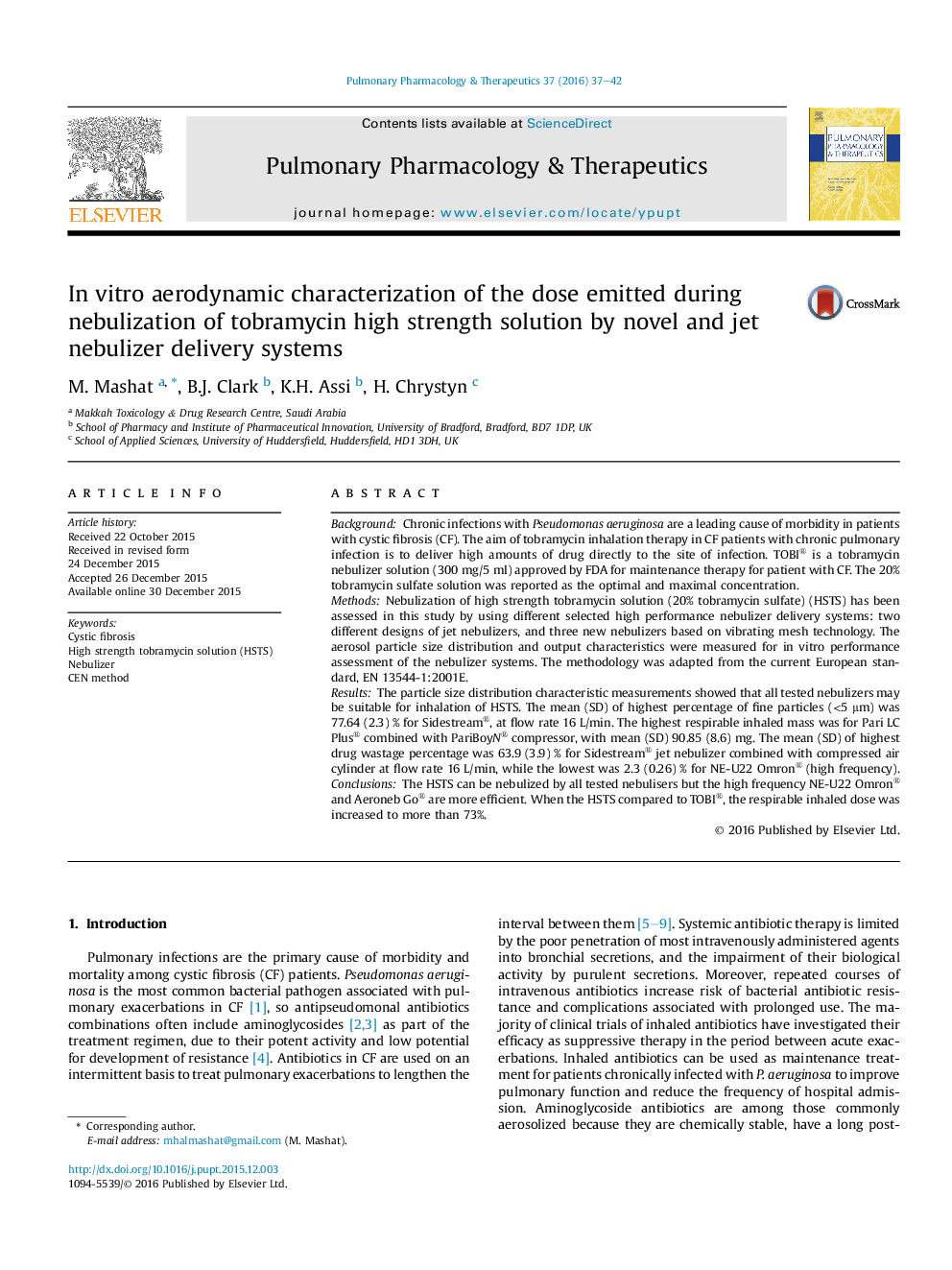| کد مقاله | کد نشریه | سال انتشار | مقاله انگلیسی | نسخه تمام متن |
|---|---|---|---|---|
| 2566945 | 1561086 | 2016 | 6 صفحه PDF | دانلود رایگان |

BackgroundChronic infections with Pseudomonas aeruginosa are a leading cause of morbidity in patients with cystic fibrosis (CF). The aim of tobramycin inhalation therapy in CF patients with chronic pulmonary infection is to deliver high amounts of drug directly to the site of infection. TOBI® is a tobramycin nebulizer solution (300 mg/5 ml) approved by FDA for maintenance therapy for patient with CF. The 20% tobramycin sulfate solution was reported as the optimal and maximal concentration.MethodsNebulization of high strength tobramycin solution (20% tobramycin sulfate) (HSTS) has been assessed in this study by using different selected high performance nebulizer delivery systems: two different designs of jet nebulizers, and three new nebulizers based on vibrating mesh technology. The aerosol particle size distribution and output characteristics were measured for in vitro performance assessment of the nebulizer systems. The methodology was adapted from the current European standard, EN 13544-1:2001E.ResultsThe particle size distribution characteristic measurements showed that all tested nebulizers may be suitable for inhalation of HSTS. The mean (SD) of highest percentage of fine particles (<5 μm) was 77.64 (2.3) % for Sidestream®, at flow rate 16 L/min. The highest respirable inhaled mass was for Pari LC Plus® combined with PariBoyN® compressor, with mean (SD) 90.85 (8.6) mg. The mean (SD) of highest drug wastage percentage was 63.9 (3.9) % for Sidestream® jet nebulizer combined with compressed air cylinder at flow rate 16 L/min, while the lowest was 2.3 (0.26) % for NE-U22 Omron® (high frequency).ConclusionsThe HSTS can be nebulized by all tested nebulisers but the high frequency NE-U22 Omron® and Aeroneb Go® are more efficient. When the HSTS compared to TOBI®, the respirable inhaled dose was increased to more than 73%.
Journal: Pulmonary Pharmacology & Therapeutics - Volume 37, April 2016, Pages 37–42